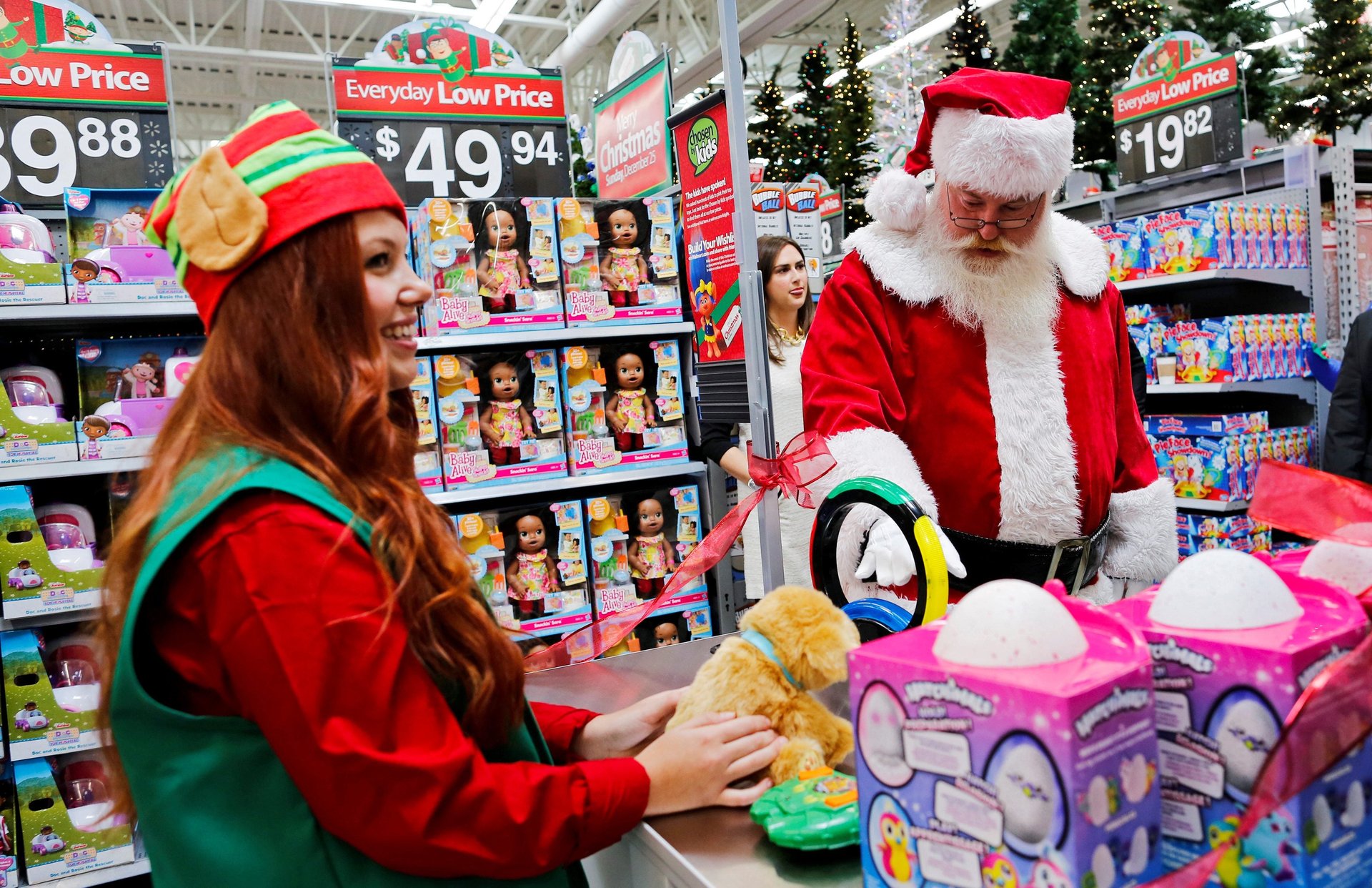Brick-and-mortar retailers are stooping to selfie booths and “holiday helpers” to fend off Amazon
Every holiday season, the stakes get higher for brick-and-mortar retailers fighting off the rise of online sites like Amazon. And with good reason: The National Retail Federation expects online sales in the US to jump from 7% to 10% this holiday season, while research firm PwC predicts that e-commerce will rise by 25%.


Every holiday season, the stakes get higher for brick-and-mortar retailers fighting off the rise of online sites like Amazon. And with good reason: The National Retail Federation expects online sales in the US to jump from 7% to 10% this holiday season, while research firm PwC predicts that e-commerce will rise by 25%.
Better discounts and customer service haven’t managed to stem the tide of harried holiday consumers turning to online shopping. So this year, brick-and-mortar retailers are doubling down on in-person “experiences” consumers won’t find on their smartphones and laptops. Wal-Mart is rolling out selfie booths for consumers to snap pics of themselves and Santas roaming the stores, and ”holiday helpers,” employees who stand guard at checkout lanes and help (or nag at) customers to retrieve forgotten items. Target has said it’s rolling out toy demonstrations, along with in-store marketing that will feature ”elements of theater” like spotlights and red stage curtains.
Both stores plan to offer “exclusive products” you can’t find online. Those include a $400 Disney Princess Carriage at Wal-Mart, and a 10-disc box set from Garth Brooks, featuring the 25th anniversary edition of “Friends in Low Places” at Target. For its part, Home Depot has created a new app that lets customers get directions to an item they’re looking for in the store, along with information on inventory and what other locations might carry the item. Lord & Taylor is offering an app that allows customers to live-chat with a salesperson while shopping; Saks Fifth Avenue is enlisting an army of personal shoppers to help people pick out gifts.
Employing all those extra hands is a risky bet. Retailers angling for a leg up are already scrambling for seasonal workers, which has put upward pressure on wages. The typical non-seasonal hourly rate of $10 to $12 is expected to climb by $1.50 to $3 an hour during the fourth quarter, according to Prologistix, a large US logistics staffing company.
Incorrectly estimating staffing needs has hit retailers and logistics companies in the past. More online shopping and harsh winter weather cost UPS some $200 million in overtime pay, customer refunds, and other overruns costs in 2013, according to the Wall Street Journal.
“What we see the leading retailers doing is creating emotional experiences in their stores,” said Steven Barr, PwC’s U.S. retail and consumer leader. “A website can’t give you goosebumps.” The question is whether the goosebumps will pay off.
Correction: An earlier version of this article said the toy demonstrations at Target would feature “elements of theater.” It is the in-store marketing that will include those elements, not the toy demonstrations.